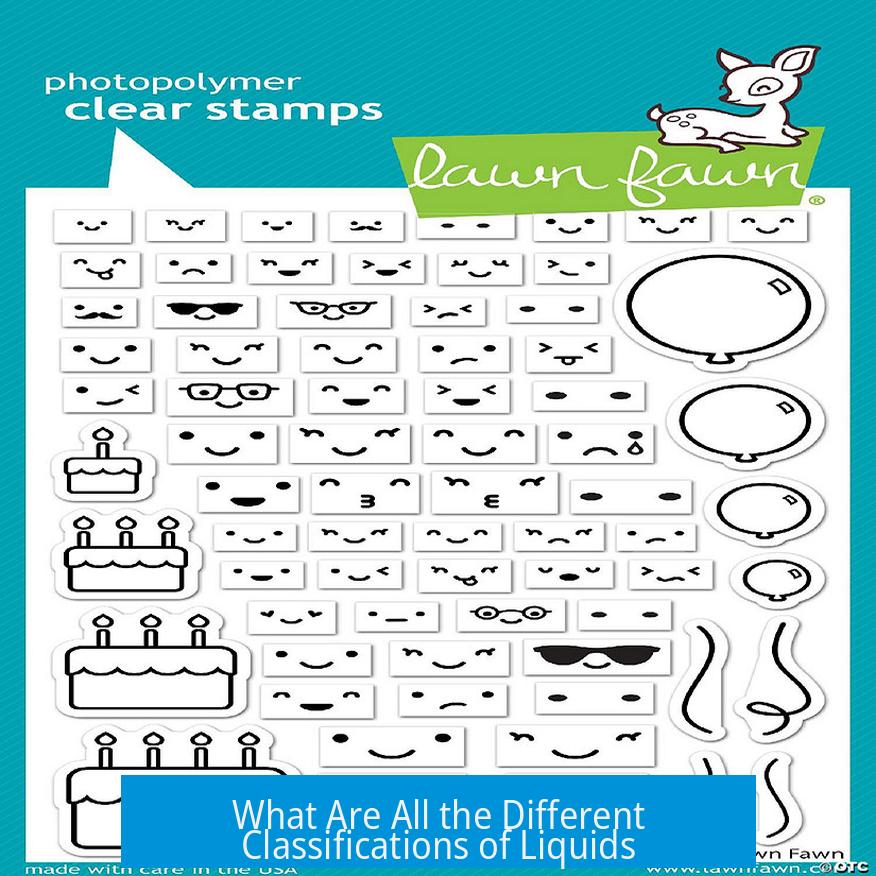What Are All the Different Classifications of Liquids?

Liquids can be classified in several ways based on their chemical properties, physical characteristics, and functional use. These classifications include acid/base/neutral, aqueous/non-aqueous, oils, functional group-based categories, surfactants, and gels. Each classification highlights distinct features, but no single system fully describes all liquids.
1. Acid, Base, or Neutral Liquids
This classification depends on the pH and presence of hydrogen ions (H+). Acids increase H+ concentration, bases decrease it, and neutral liquids have balanced H+ and OH- ions. However, many liquids lack H+ ions entirely, such as liquid metals, making this classification irrelevant for them.
2. Aqueous vs. Non-Aqueous Liquids
This system distinguishes liquids based on their solvent environment. Aqueous liquids use water as the solvent. Non-aqueous liquids employ other solvents like hexane or diethyl ether. Since many acids and bases dissolve or react outside water, this classification does not encompass all cases.
3. Oils
Oils are liquids with low volatility and high boiling points. They often have higher viscosity than water. Chemically, oils and fats share similarities, but oils usually remain liquid at room temperature. Examples include olive oil, glycerin, and even 98% sulfuric acid due to their physical properties.
4. Functional Group-Based Classifications
Many liquids fall into chemical classes based on molecular groups. Examples include alcohols, ketones, diols, polyols, and hydrocarbons. This classification refers to molecular structure, not just liquid state. For instance, liquid sugar can be a polyol and aldehyde simultaneously.
5. Surfactants
Surfactants are molecules that lower surface tension. Some exist as liquids, others as solids or gels. Their role is defined by their chemical nature rather than their liquid state, so surfactants represent a chemical class more than a physical classification.
6. Gels
Gels are suspensions of solids in liquids, producing a semi-solid material. They are not pure liquids but contain dispersed particles. This distinction separates them from typical liquid classifications.
Challenges in Classifying Liquids
- Many liquids display overlapping properties and do not fit neatly into one category.
- Classifications often emphasize one aspect, like chemistry, viscosity, or solvent environment, but neglect others.
- No single system comprehensively covers all liquid types or their diverse behaviors.
Key Takeaways
- Acid/base classification applies only when H+ ions are present.
- Aqueous/non-aqueous distinctions depend on the solvent medium.
- Oils are characterized by low volatility and higher viscosity.
- Functional groups categorize liquids by molecular structure.
- Surfactants are chemical classes, not solely liquid types.
- Gels contain solids dispersed within liquids, not pure liquids.
- Liquid classification depends on perspective; no universal system exists.
What does the acid/base/neutral classification of liquids mean?
This classification is based on pH levels involving H+ ions. Many liquids, like liquid metals, don’t have hydrogen ions, so this system doesn’t always apply to all liquids.
How are liquids classified as aqueous or non-aqueous?
Aqueous liquids have water as a solvent. Non-aqueous liquids use solvents other than water, like hexane or diethyl ether. Many acids and bases can exist in both types.
What defines oils compared to other liquids?
Oils have high boiling points and are more viscous than water. Chemically, oils and fats are similar, but oils are recognized by these physical features.
How do functional groups affect liquid classification?
Liquids can be grouped by the chemical functional groups in their molecules, such as alcohols, ketones, or polyols. This is about chemical structure, not physical state.
Are gels considered liquids in classification systems?
Gels are mixtures with solids suspended in a liquid. They are not pure liquids but have unique properties due to this composition.





Leave a Comment